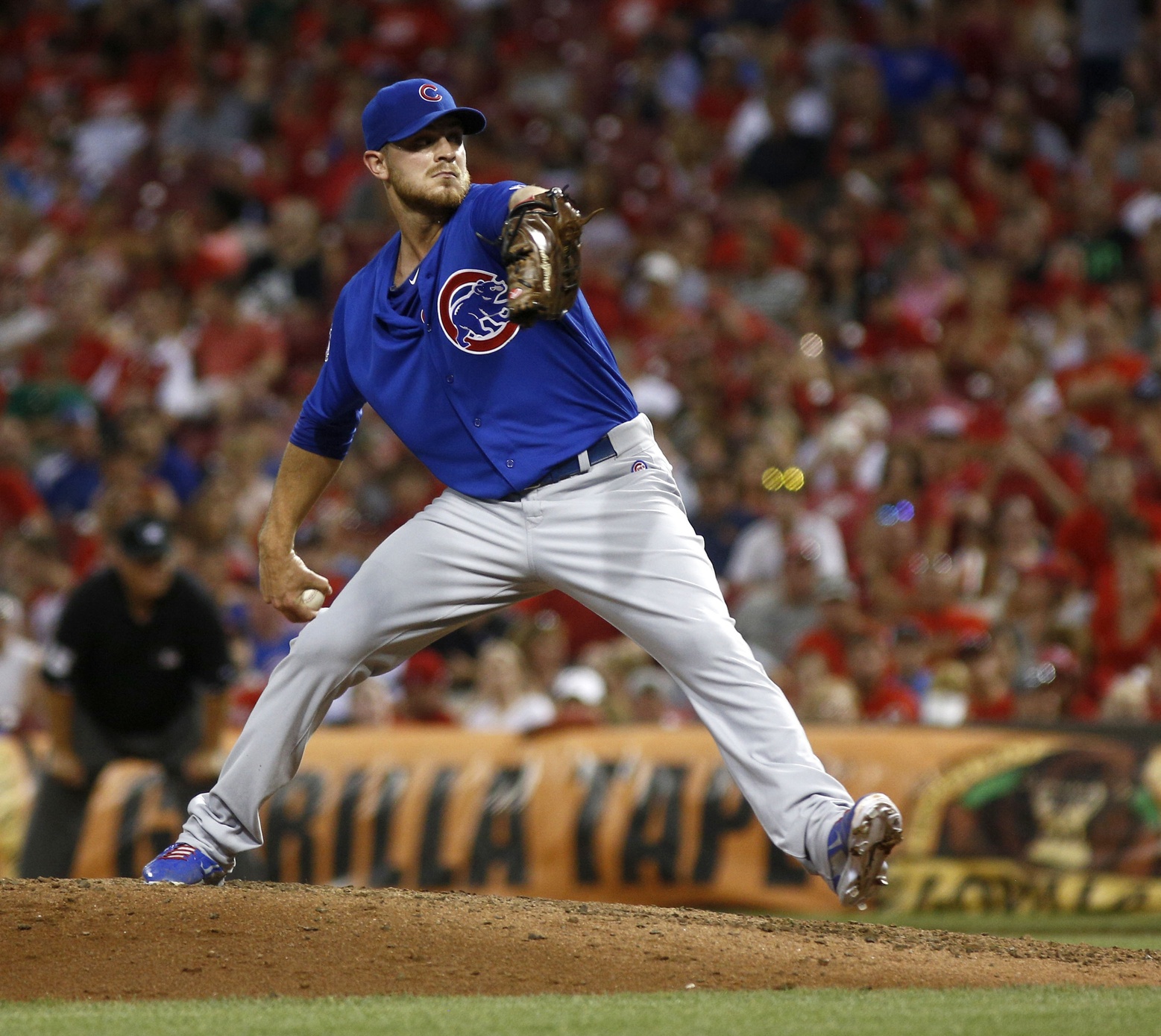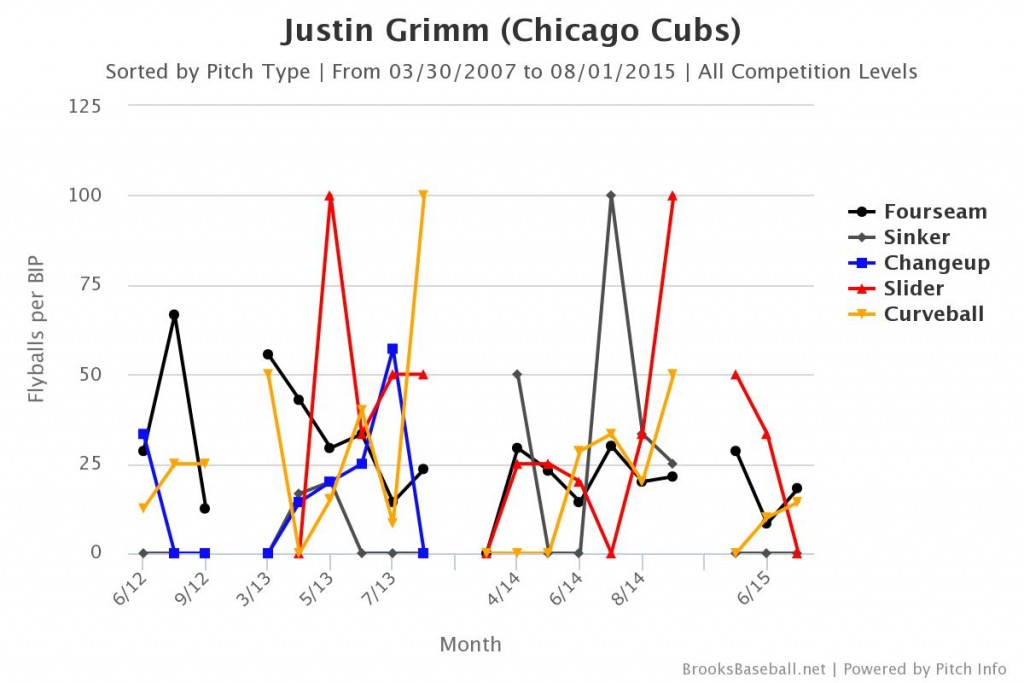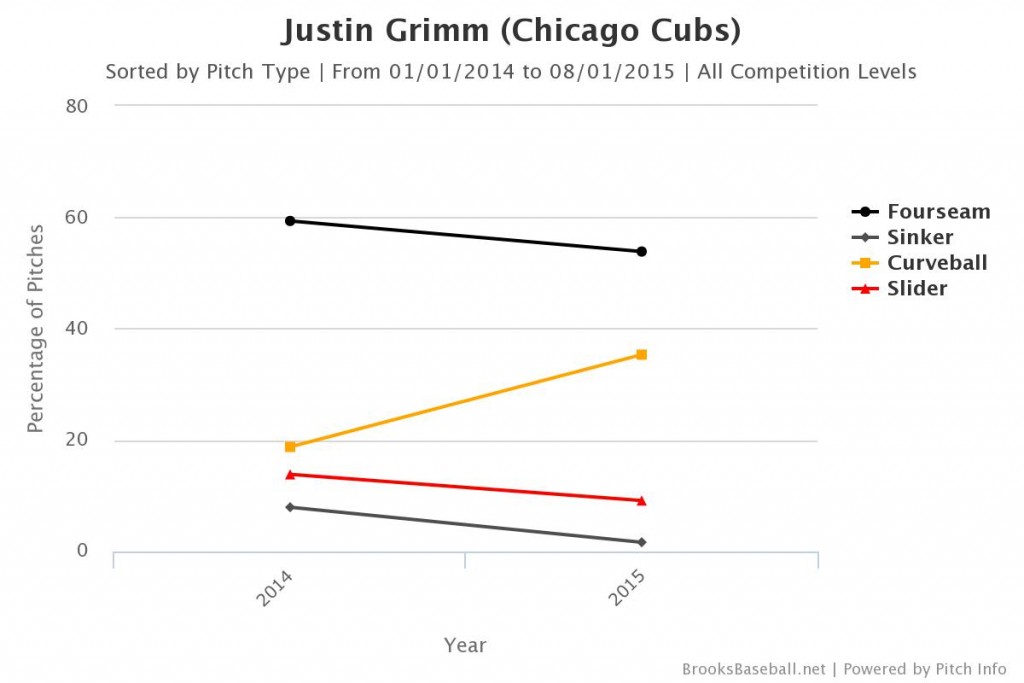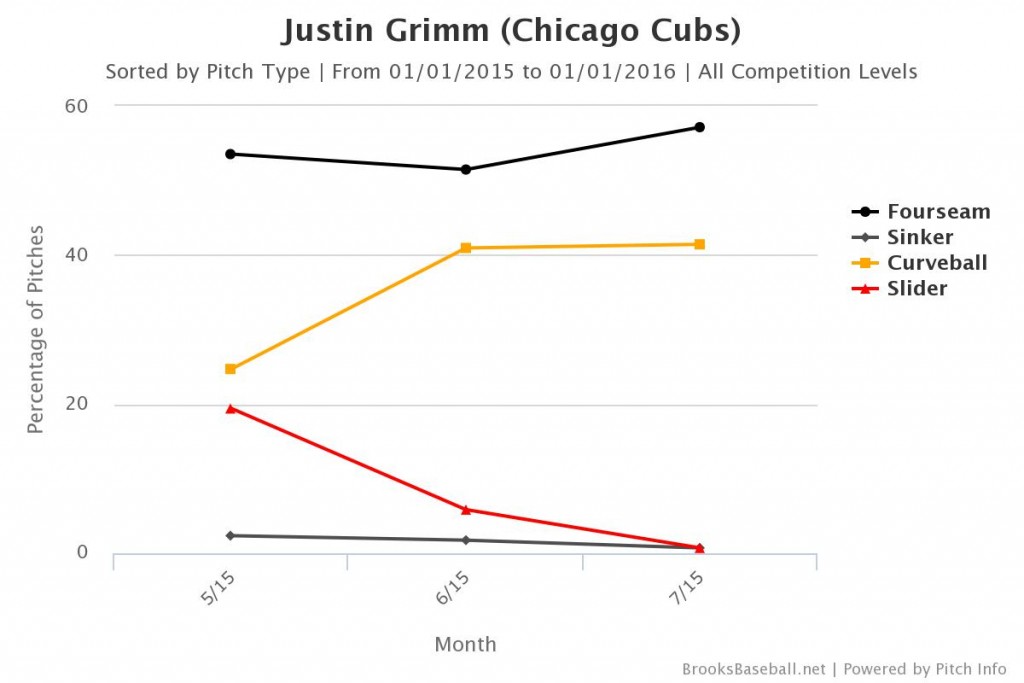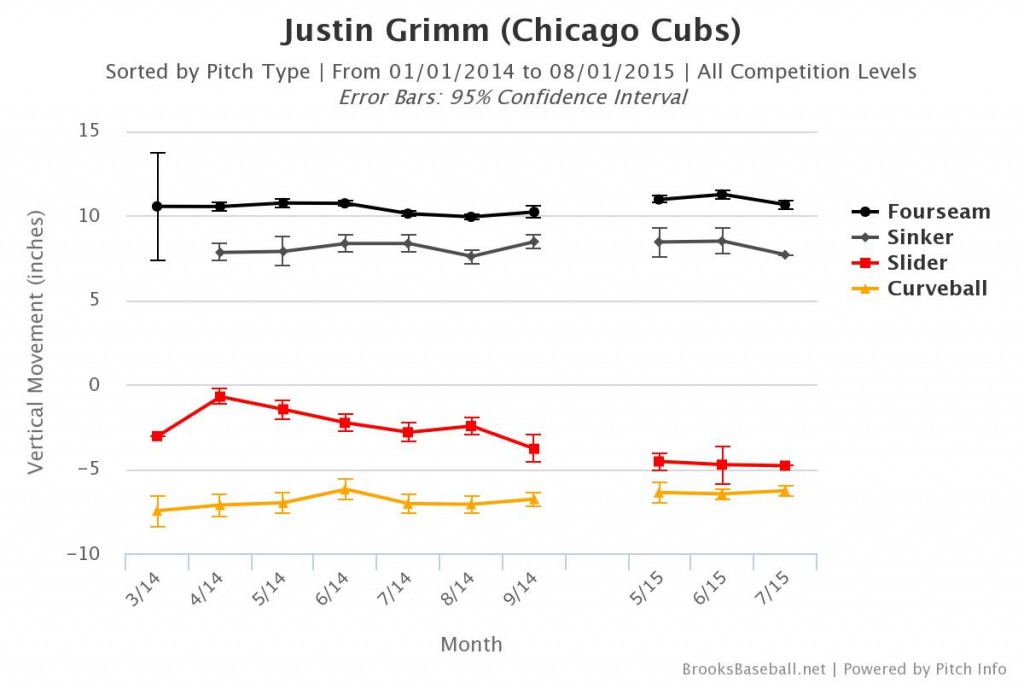The Cubs’ offense is slowly righting itself thanks to good second-half performances from Dexter Fowler and Addison Russell, coupled with Anthony Rizzo’s recent home-run tear, and the starting pitching is due to find some stability with the addition of Dan Haren, so I’d like to turn an eye to the still-shifting bullpen situation. It’s been a couple weeks since Matt Trueblood and Cat Garcia last checked in on the ‘pen, their focus on the larger picture; I’d like to get down to the nitty gritty on Justin Grimm, a key contributor who will likely find more opportunities in big situations going forward.
Entering the season, Grimm looked to build upon a breakout 2014 in which he posted a 24 percent strikeout rate, his highest rate since Low-A ball, and a solid 9.3 percent walk rate. This season, a right forearm injury kept him out of major-league games until May, but he’s put up an astounding 37.5 percent K% and while the walk rate has taken a hit, jumping to 11.6 percent. He’s allowed fewer fly balls this year than any other time in his big-league career, with July 2015 among his best months in that regard, and, according to FanGraphs, he’s inducing infield popups at more than double the rate than last year (23.1 percent to 10.6 percent).
Essentially, he’s been slightly better than he was last year, which is encouraging given his early-season injury. He’s not quite the “same pitcher,” though, as he’s significantly altered one portion of his game, evinced by this chart:
One of the factors in Grimm’s success this season has been his decision to eschew his slider in favor of his hard curve. Check out his usage from 2014 and 2015. He has nearly doubled his curveball usage this season, and each of his three other pitches has experienced a proportional decline. Now, take a look at his usage by month this season:
The change is quite dramatic. Grimm simply stopped throwing his slider in favor of his curveball over the past two months. In July, he appeared 11 times and threw a single pitch classified as a slider. His curveball velocity sat at its highest for any month in his career at 83.76 mph. Interestingly, the vertical movement of his slider and curveball have creeped closer to each other this season.
As seen above, the vertical movement of Grimm’s curve and slider have crept closer and closer together each month over the past 14 months. Both the similarity in movement of the two pitches and the fact that he’s throwing his curve harder than ever before leads me to believe that Grimm is favoring a more “slurvey” pitch over the well differentiated pitches he had previously thrown, and that pitch is showing up as a curveball in the data.
When Grimm came off the DL in May, he discussed how his career-high in appearances last season, as well as his high rate of breaking balls, led to his forearm injury. However, I don’t think that the injury is the reason that he has switched pitch mix, since it’s a phenomenon from only June and July. Rather, I suspect it’s a conscious performance decision. I’m slightly concerned that Grimm is evolving from a three-pitch pitcher to a two-pitch one, but so far his tactical change has produced results. There are a few things that do quell my concerns, however. For one, while his whiffs-per-swing on his curve have actually gone down with his increase in usage (which makes sense, since hitters have fewer pitches from which to guess), his fastball induced a higher percentage of whiffs-per-swing in July than any month in his career, a full third of swings on the pitch. His four-seam velocity hasn’t increased, so I imagine that hitters have become less likely to “guess” fastball than in the past with his turn towards the curve, although it’s difficult to say for certain what effect his curveball reliance will have on his fastball effectiveness for the rest of the season. Secondly, of his 42 strikeouts this season, 18 have come on the curveball, one more than have come on fastballs. He’s using it as an out pitch and as a way to keep hitters off of his fastball.
All this has lead to a good season from the Cubs’ reliever. In terms of outcomes, his curveball has held hitters to a miserly .128 batting average and .026 ISO. His 3.77 DRA is good, not sterling, but 75 cFIP (a predictor of future performance) indicates a possibility for even better performance. Holistically, Grimm is pitching better than he has in his entire career.
Grimm has become a more effective reliever at a key point in the Cubs’ season. Hector Rondon has been lights out, Pedro Strop has been good, and Tommy Hunter should help, but Jason Motte’s ineffectiveness and Rafael Soriano’s failure to be the “veteran presence” he was expected to be leave that important third rung in the bullpen hierarchy vacant. I’m intrigued by Joe Maddon’s recent changes in his ‘pen management, with Strop and Rondon settling back into the eighth and ninth inning roles they had assumed last season and early on this year. If Grimm is able to capitalize on the evolution of his pitch arsenal, he has the opportunity to become Maddon’s go-to reliever in high-leverage situations before the eighth and a lynchpin in the Cubs’ postseason run.
Lead photo courtesy David Kohl-USA TODAY Sports
